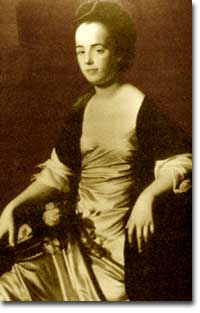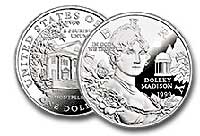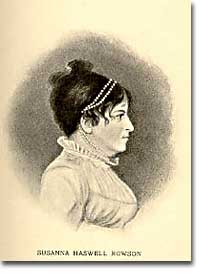Continuity and Change Over Time Role of Women in America From 1776 1860

13e. Revolutionary Changes and Limitations: Women

Playwright, essayist and poet, Judith Sargent Murray (1751-1820) is considered one of the first public champions of women's rights in the U.S.
The Revolutionary rethinking of the rules for society also led to some reconsideration of the relationship between men and women. At this time, women were widely considered to be inferior to men, a status that was especially clear in the lack of legal rights for married women. The law did not recognize wives' independence in economic, political, or civic matters in Anglo-American society of the eighteenth century.
Even future First Ladies had relatively little clout. After the death of her first husband, Dolley Todd Madison, had to fight her deceased spouse's heirs for control of his estate. And Abigail Adams, an early advocate of women's rights, could only encourage her husband John, to "Remember the Ladies" when drawing up a new federal government. She could not participate in the creation of this government, however.

The Revolution increased people's attention to political matters and made issues of liberty and equality especially important. As Eliza Wilkinson of South Carolina explained in 1783, "I won't have it thought that because we are the weaker sex as to bodily strength we are capable of nothing more than domestic concerns. They won't even allow us liberty of thought, and that is all I want."

The Dolley Madison silver dollar was minted as a tribute to Madison's work in Washington, especially during the War of 1812.
Judith Sargent Murray wrote the most systematic expression of a feminist position in this period in 1779 (but not published until 1790). Her essay, "On the Equality of the Sexes," challenged the view that men had greater intellectual capacities than women. Instead she argued that whatever differences existed between the intelligence of men and women were the result of prejudice and discrimination that prevented women from sharing the full range of male privilege and experience. Murray championed the view that the "Order of Nature" demanded full equality between the sexes, but that male domination corrupted this principle.
Like many other of the most radical voices of the Revolutionary Era, Murray's support for gender equality was largely met by shock and disapproval. Revolutionary and Early National America remained a place of male privilege. Nevertheless, the understanding of the proper relationships among men, women, and the public world underwent significant change in this period. The republican thrust of revolutionary politics required intelligent and self-disciplined citizens to form the core of the new republic. This helped shape a new ideal for wives as "republican mothers" who could instruct their children, sons especially, to be intelligent and reasonable individuals. This heightened significance to a traditional aspect of wives' duties brought with it a new commitment to female education and helped make husbands and wives more equal within the family.

Susanna Haswell Rowson (1762-1824), in the preface to her novel Charlotte Temple, dedicates the book "to the many daughters of Misfortune who, deprived of natural friends, or spoilt by a mistaken education, are thrown on an unfeeling world without the least power to defend themselves from the snares not only of the other sex, but from the more dangerous arts of the profligate of their own."
Although "republican motherhood" represented a move toward greater equality between husbands and wives, it was far less sweeping than the commitment to equality put forth by women like Judith Sargent Murray. In fact, the benefits that accompanied this new ideal of motherhood were largely restricted to elite families that had the resources to educate their daughters and to allow wives to not be employed outside the household. Republican motherhood did not meaningfully extend to white working women and was not expected to have any place for enslaved women.
Nevertheless, this new way of understanding elite women's relationship to the broader world began long-term changes whose later influence would be profound. For example, the 1790s saw the expansion of new kinds of books aimed for a female audience and often written by women. Susanna Haswell Rowson's tale of seduction Charlotte Temple (1791), for example, was a best-selling novel well into the 19th century. This new form of popular writing reflected and helped further expanded education and literacy for women. The female heroines of these novels frequently provided examples of the unjust suffering of women in a male-dominated world.
![]()
If you like our content, please share it on social media!

![]()
Source: https://www.ushistory.org/us/13e.asp
0 Response to "Continuity and Change Over Time Role of Women in America From 1776 1860"
Post a Comment